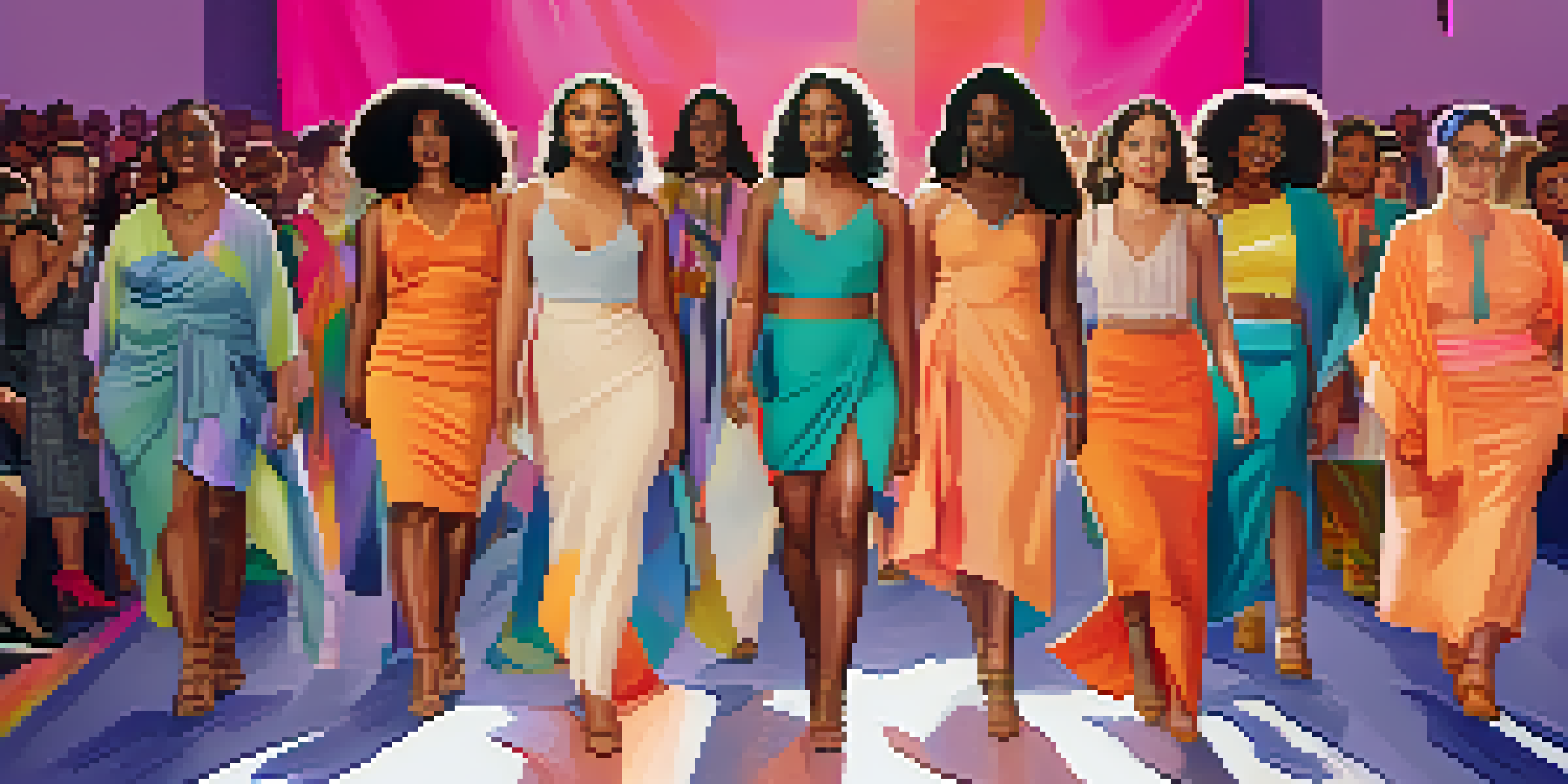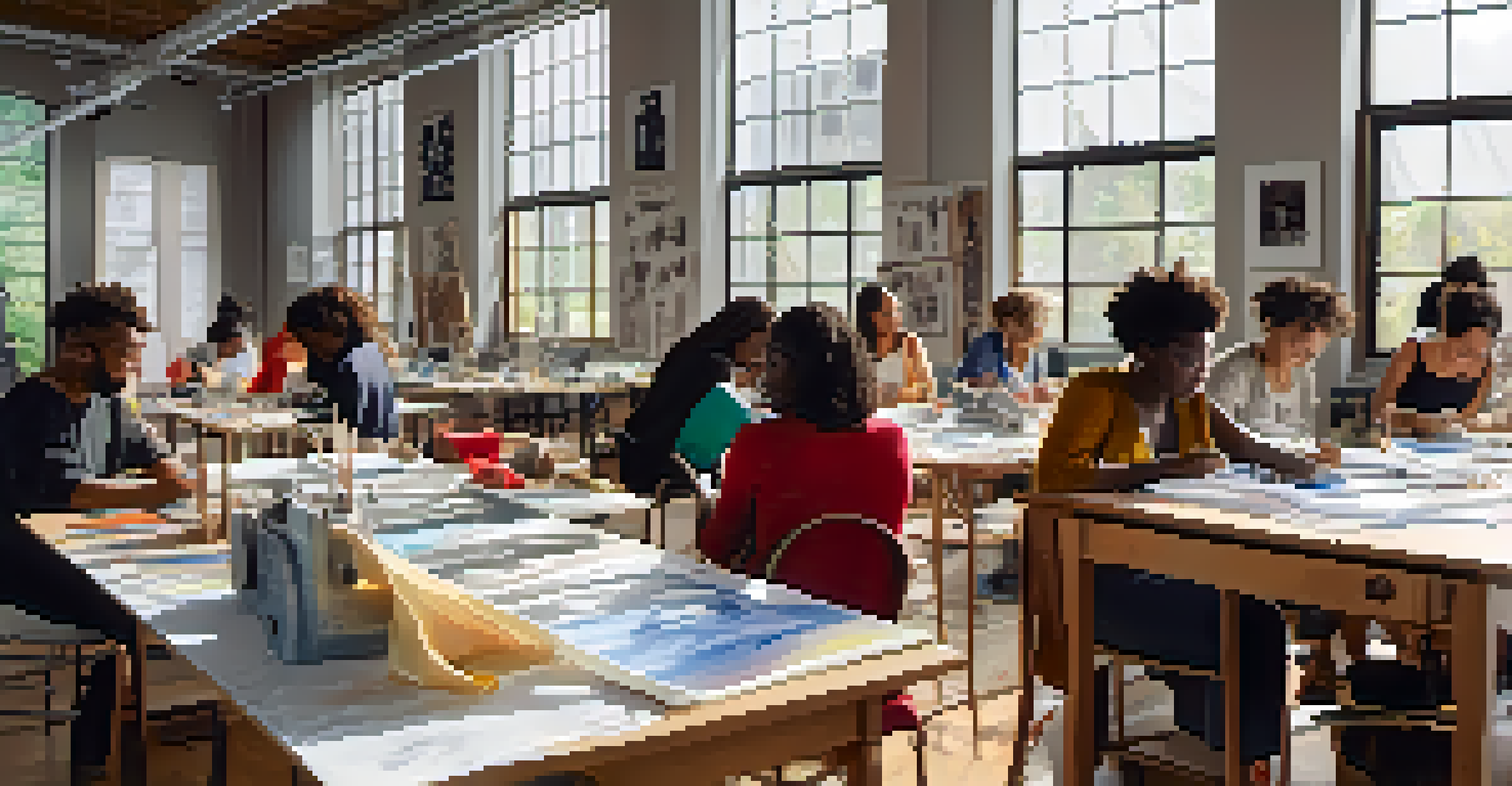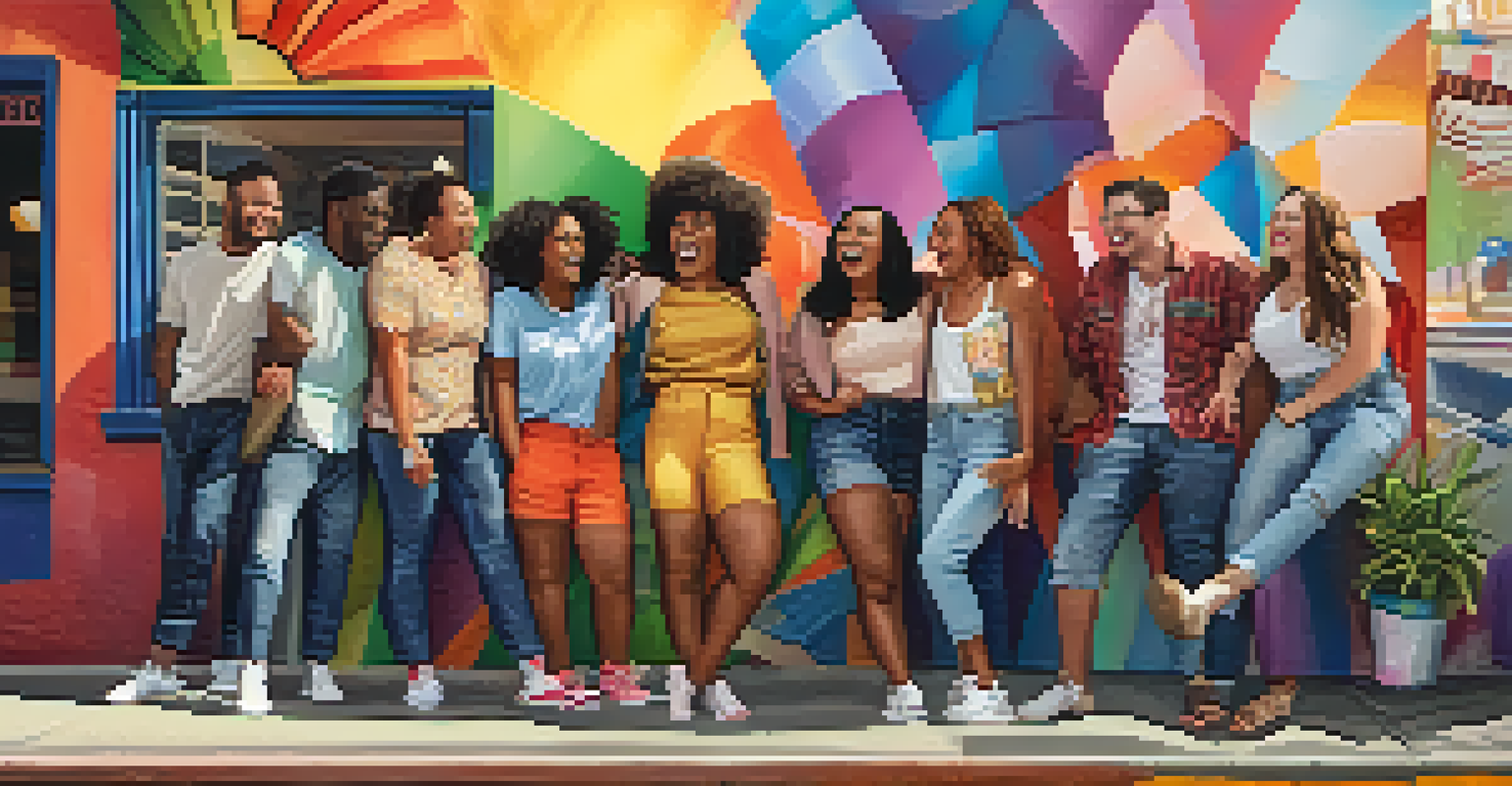The Impact of Inclusive Fashion on Marginalized Communities

Understanding Inclusive Fashion and Its Importance
Inclusive fashion refers to clothing that accommodates and represents diverse body types, abilities, and backgrounds. It's not just about style; it's about accessibility and belonging. When fashion embraces everyone, it fosters a sense of community and self-acceptance among individuals who often feel overlooked.
Fashion is about dreaming and making other people dream. It should not be a privilege reserved for a few, but a platform for everyone.
In a world where beauty standards are often narrow, inclusive fashion acts as a counterbalance. It challenges the traditional norms by celebrating uniqueness and individuality. This shift is crucial because feeling represented in the fashion industry can significantly boost self-esteem and confidence.
By prioritizing inclusivity, designers and brands can create a more equitable environment. This not only benefits marginalized communities but also enriches the fashion landscape, making it vibrant and reflective of real-world diversity.
The Role of Marginalized Voices in Fashion Design
Marginalized communities play a vital role in shaping inclusive fashion. Their experiences and needs inspire designers to create clothing that genuinely resonates with a broader audience. When these voices are included in the design process, the results are often more innovative and authentic.

For instance, brands that collaborate with individuals from marginalized backgrounds often produce collections that reflect real-life challenges and preferences. This collaboration ensures that the designs are not only fashionable but also practical and functional for those who wear them.
Inclusive Fashion Empowers All
By accommodating diverse body types and backgrounds, inclusive fashion fosters community and self-acceptance.
Furthermore, amplifying these voices helps to dismantle stereotypes and misconceptions about marginalized groups. It encourages a dialogue that can lead to greater understanding and acceptance within the broader fashion community.
Positive Economic Impact of Inclusive Fashion
Inclusive fashion can significantly boost economic opportunities for marginalized communities. By creating clothing that caters to diverse needs, brands can tap into a previously underserved market. This helps generate income and create jobs, contributing to local economies.
Inclusivity is not a choice; it is a must. It is about making people feel that they belong.
Moreover, when brands prioritize inclusivity, they often see an increase in customer loyalty. Consumers are more inclined to support companies that align with their values, including diversity and representation. This loyalty can translate into sustained revenue growth for those brands.
The economic benefits extend beyond just sales. When marginalized individuals are involved in the fashion industry, they gain skills and experience, empowering them to pursue further opportunities and careers in fashion and beyond.
How Inclusive Fashion Fosters Community and Belonging
Fashion has always been a medium for self-expression, but inclusive fashion takes it a step further by fostering community. When individuals see themselves represented in clothing, it creates a sense of belonging that transcends mere aesthetics. This feeling of acceptance can be life-changing for many.
Community events, such as inclusive fashion shows or workshops, bring people together and celebrate diversity. These gatherings not only showcase diverse styles but also create connections among individuals who share similar experiences. This sense of community can be empowering and uplifting.
Marginalized Voices Drive Innovation
Incorporating experiences from marginalized communities leads to authentic and practical fashion designs.
Ultimately, inclusive fashion helps to break down barriers, allowing marginalized individuals to come together and celebrate their identities. It reinforces the idea that everyone deserves to feel beautiful and confident in what they wear.
The Influence of Social Media on Inclusive Fashion Trends
Social media has revolutionized the way fashion is consumed and shared, particularly for inclusive fashion. Platforms like Instagram and TikTok allow marginalized voices to showcase their style and advocate for representation. This visibility encourages brands to rethink their approach to inclusivity.
Influencers from diverse backgrounds are using their platforms to highlight inclusive fashion brands and share personal stories. Their impact can drive trends and encourage followers to support brands that prioritize inclusivity. This grassroots movement is reshaping consumer expectations in the fashion industry.
As consumers become more aware of inclusivity issues, brands that fail to adapt risk losing relevance. Social media serves as both a platform for advocacy and a marketplace, pushing inclusive fashion into the mainstream spotlight.
Challenges Facing Inclusive Fashion Initiatives
While inclusive fashion is making strides, there are still significant challenges to overcome. Many brands still prioritize traditional sizing and aesthetics, limiting their reach and impact. This reluctance can hinder progress and perpetuate feelings of exclusion among marginalized individuals.
Another challenge is the often superficial commitment to inclusivity. Brands may launch one or two inclusive lines without fully understanding or supporting the needs of marginalized communities. This tokenism can lead to skepticism and disappointment from consumers who seek genuine representation.
Economic Benefits of Inclusivity
Brands prioritizing inclusive fashion not only gain customer loyalty but also create job opportunities for underserved markets.
To make meaningful progress, brands must engage in ongoing dialogue with marginalized communities. This involves listening, learning, and adapting to their needs rather than simply creating products to capitalize on trends.
The Future of Fashion: Embracing True Inclusivity
The future of fashion lies in its ability to embrace true inclusivity. As more brands become aware of the importance of representation, we can expect to see a broader array of styles and options that cater to all individuals. This shift has the potential to reshape the industry for the better.
Moreover, as consumers continue to demand change, brands will be held accountable for their practices. This accountability will push the fashion industry to prioritize inclusivity as a core value rather than a marketing gimmick. The more consumers advocate for diversity, the more brands will be compelled to listen.

Ultimately, the goal is to create a fashion landscape where everyone feels seen, valued, and empowered. By working together, brands, consumers, and marginalized communities can contribute to a more inclusive and representative future in fashion.